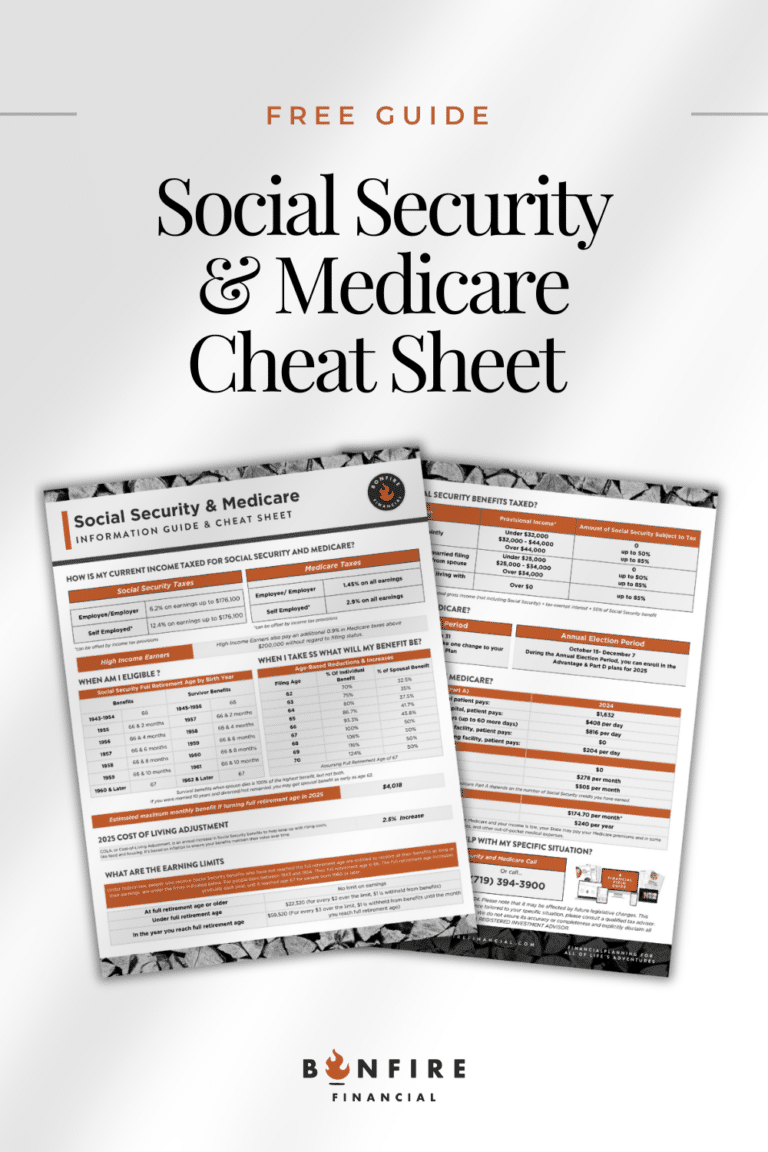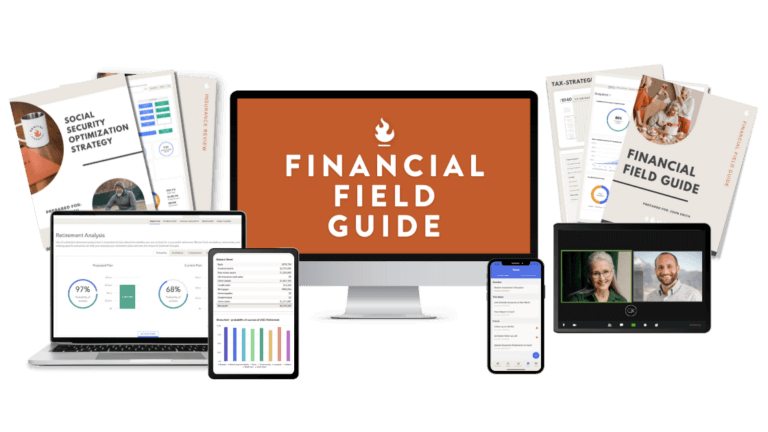Charitable Giving Strategies
When it comes to giving, generosity and good planning often go hand in hand. The joy of supporting causes you care about is its own reward, but when done strategically, it can also create meaningful tax advantages. With several tax changes coming, there’s never been a better time to revisit your approach to charitable giving.
Today, we’ll break down smart charitable giving strategies to help you give intentionally, reduce your tax bill, and make a greater impact on the organizations you care about most.
Listen Now: iTunes | Spotify | iHeartRadio | Amazon Music
Why Timing Matters: Planning Your Giving
Tax laws ebb and flow, and timing can make a real difference in how much benefit you receive from your charitable contributions. If you’ve been thinking about opening a Donor-Advised Fund (DAF), bunching your deductions, or gifting from your IRA, now may be the sweet spot to act.
Because of upcoming changes to deduction thresholds and standard deduction amounts, what you give, and when, can significantly affect your tax outcome. Waiting until next year could mean leaving money on the table. By planning ahead, you can align your giving with the years that will produce the largest tax impact.The Power of Donor-Advised Funds
One of the most flexible charitable giving strategies is the Donor-Advised Fund (DAF). A DAF allows you to make a large charitable contribution in one year, receive an immediate tax deduction, and then recommend grants to your favorite charities over time.
If you typically take the standard deduction and don’t have enough itemized deductions to exceed it, a DAF can help. By “bunching” several years’ worth of charitable giving into one year, you can itemize in that year and potentially claim a much larger deduction — while still supporting your causes in future years through the fund.
Example:
If you usually donate $10,000 each year, consider giving $30,000 to a DAF in 2025. You’ll receive the full deduction in 2025, then distribute that money to charities gradually over the next few years.
It’s a way to amplify your tax savings without changing your charitable goals.
Qualified Charitable Distributions (QCDs): A Win-Win for Retirees
For those over age 70½, one of the most underused charitable giving strategies is the Qualified Charitable Distribution (QCD).
A QCD allows you to donate up to $105,000 per year directly from your IRA (check here for the current year’s limits) to a qualified charity. The key advantage is that the amount given is excluded from your taxable income. This is especially valuable if you’re already taking Required Minimum Distributions (RMDs, since a QCD can satisfy all or part of that RMD without increasing your taxable income.
This approach doesn’t just reduce your tax bill; it can also keep your adjusted gross income lower, which may help you avoid Medicare surcharges or taxation on Social Security benefits.
Quick facts about QCDs:
-
You must be at least 70½ years old at the time of the distribution.
-
The gift must go directly from your IRA to the charity.
-
You can give up to $105,000 per person per year in 2025.
-
The charity must be a qualified 501(c)(3) organization — not a private foundation or donor-advised fund.
A practical tip
If your IRA is held at Schwab, you can even write checks directly to the charity from your IRA account. Just remember: the funds must already be in cash, not invested, or the check could bounce.
It’s a simple, elegant way to give and one that can significantly enhance your retirement-age tax efficiency.
Avoiding Common QCD Mistakes
Even the most generous donors can lose out on tax savings if they overlook the details. Here are a few pitfalls to avoid:
• Forgetting to track your QCDs on your tax return.
Your IRA custodian will issue a 1099-R showing your total distributions, but they won’t specify how much was donated. It’s up to you (or your CPA) to note the amount that was given as a QCD so it isn’t counted as taxable income.
• Writing the check before ensuring cash is available.
In an IRA, investments must be sold before cash becomes available. Confirm your balance before writing your QCD check.
• Giving through the wrong type of account.
QCDs only work for IRAs , not 401(k)s or donor-advised funds. If you’re planning to give from another account, talk with your advisor about rolling funds into an IRA first.
Small mistakes can make a big difference come tax time, so double-checking the details can protect your deduction and avoid unpleasant surprises.
Combining Giving with Retirement Planning
For retirees or those approaching retirement, charitable giving can be more than just generosity , it can be part of a broader income and estate plan.
A few key charitable giving strategies to consider:
• Coordinate QCDs with your RMDs.
If you don’t need your RMD income for living expenses, direct it straight to charity. You’ll meet your distribution requirement and avoid adding to your taxable income.
• Donate appreciated assets.
Instead of selling stocks or mutual funds and paying capital gains, you can donate the shares directly. You’ll avoid the capital gains tax and may still receive a deduction for the full fair market value.
• Create a charitable remainder trust (CRT).
If you’d like to generate income while still giving back, a CRT allows you to donate assets, receive a partial tax deduction, and collect income for life or a set term with the remainder going to charity.
Strategic giving lets you support what you care about while strengthening your overall financial plan.
Why Timing Matters in your Charitable Giving Strategy
Tax laws and deduction thresholds are always evolving, which means the timing of your charitable contributions can make a meaningful difference.
If you’ve been thinking about setting up a donor-advised fund, making a larger contribution, or simply becoming more intentional with your giving, taking action sooner rather than later can often lead to greater tax advantages.
Waiting too long to implement your plan can mean missing out on opportunities under the current rules. You’re not losing the opportunity to give, you’re just leaving some chips on the table if you wait.
Important Tip: Keep Good Records
The IRS requires documentation for any charitable contribution you plan to deduct, regardless of size. Always keep:
-
Donation receipts or acknowledgment letters from charities
-
Records of QCD checks or transfers from your IRA
-
Details of any appreciated assets donated (including cost basis and fair market value)
Your CPA will need these records at tax time to ensure your deductions are correctly applied and your income accurately reported.
Matching Your Giving to Your Values
Financial planning isn’t just about numbers, it’s about aligning your resources with what matters most to you. Charitable giving is one of the most rewarding ways to make that connection tangible.
Ask yourself:
-
Which causes have shaped your life or your family’s story?
-
What impact do you want to leave behind?
-
How can your financial plan make those goals real?
When giving is built into your plan, it stops being a once-a-year consideration and becomes part of a long-term legacy.
How Bonfire Financial Helps Clients Build a Giving Plan
At Bonfire Financial, we believe that true wealth includes the ability to give generously. Our advisors help clients create customized giving strategies that align with their financial goals, tax situation, and personal values.
Here’s what that might look like:
-
Reviewing your charitable history and identifying missed opportunities for deductions
-
Coordinating your CPA and investment accounts for smooth execution of QCDs or DAF contributions
-
Timing gifts for maximum tax efficiency, especially ahead of any new rule changes
-
Helping you decide whether to give cash, appreciated assets, or IRA distributions
By taking a proactive approach, you can make every dollar of generosity go further, both for your finances and your favorite causes.
Small Steps, Big Impact
Even modest contributions can create a significant difference over time, especially when combined with thoughtful planning. Whether you’re contributing monthly through your IRA, setting up automatic grants from a donor-advised fund, or gifting shares of appreciated stock, each move adds up to a meaningful impact.
The goal isn’t just to give, it’s to give wisely.
Final Thoughts: Plan Well, Give Generously
Charitable giving is one of the few financial strategies that truly benefits everyone involved. You help organizations that matter to you, potentially reduce your tax bill, and reinforce a sense of purpose and gratitude in your financial life.
As tax laws evolve, so should your giving plan. Review your strategy annually, especially before major tax. With the right plan, you can give more effectively, reduce your taxes, and create a legacy that reflects your values.
Ready to Create Your Charitable Giving Strategy?
If you’d like help evaluating your options or setting up a tax-efficient giving plan, our team at Bonfire Financial can walk you through the details. From donor-advised funds to QCDs and beyond, we’ll help you make the most of your generosity.
👉 Schedule a consultation today to get started.
 Client Login
Client Login







